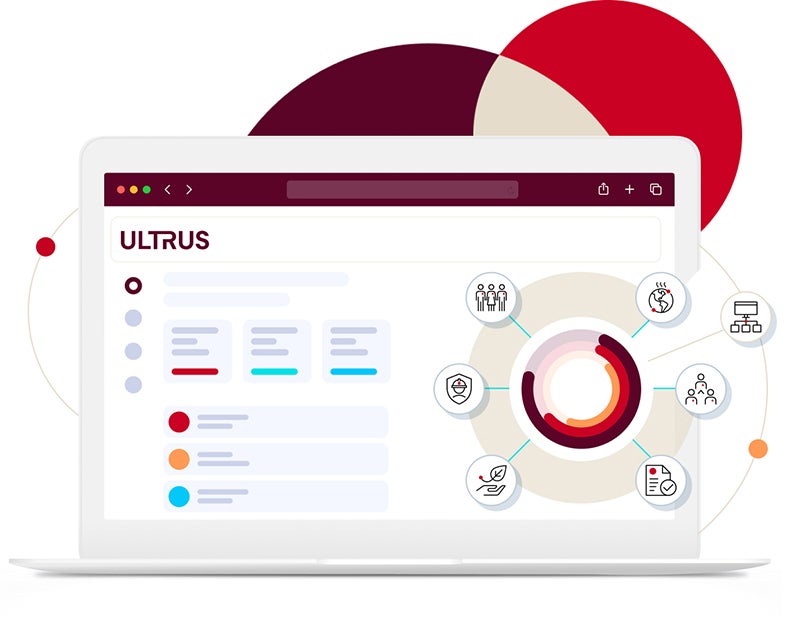Climate risk moves to the finance desk
California’s Senate Bill 261 (SB 261) redefines how companies approach climate change, recognizing it as an environmental concern and a material financial risk. While sustainability teams have traditionally led climate strategy, this new law brings the chief financial officer (CFO) into the spotlight. With climate risk now categorized as a financial reporting issue, finance leaders must prepare to respond.
Disclosures are expected to align with the Task Force on Climate-related Financial Disclosures (TCFD) framework, and this shift requires CFOs to integrate environmental considerations into the financial strategy — which necessitates cross-functional collaboration, enhanced data systems and a proactive approach to regulatory compliance.
To get started, CFOs should focus on these key actions:
- Conducting a climate risk materiality assessment
- Developing a road map for TCFD-aligned reporting
- Engaging external advisors for scenario analysis and disclosure strategy
- Educating stakeholders on the financial implications of climate risks
SB 261 requirements
California’s climate risk disclosure law applies to companies with over $500 million (USD) in annual revenue that do business in the state. Beginning on or before Jan. 1, 2026, these companies must submit biennial reports disclosing their climate-related financial risks and the strategies they are using to mitigate them. Disclosures must be aligned with established frameworks such as the TCFD and submitted to the California Air Resources Board (CARB) or a contracted third-party emissions reporting organization.
To help reduce duplicative reporting, efforts are being made to recognize disclosures already submitted to regulated exchanges, other government entities, or those that voluntarily meet the International Sustainability Standards Board (ISSB) requirements. Additionally, companies must make their disclosures publicly accessible, such as on their company website. [1]
During a public workshop on May 29, 2025, CARB announced it will clarify key terms by the end of 2025, including where disclosures can be displayed, how revenue is defined, what constitutes doing business in California and how corporate relationships with subsidiaries will be treated under the law. Although further clarification is anticipated, failure to comply can result in administrative penalties of up to $50,000 (USD) per reporting year. But beyond the legal risks, the law signals a broader shift: climate risk is now a core financial issue that must be addressed at the highest levels of corporate governance.[1]
Understanding financial climate risk
SB 261 requires companies to assess physical and transition risks related to climate change. Physical risks include damage to assets from extreme weather events, such as floods, heatwaves and wildfires. Transition risks stem from regulatory changes, evolving consumer behavior and market volatility associated with the shift to decarbonization. Both types of risks can have significant financial implications, including increased insurance premiums, higher supply chain costs, changes in asset valuations and restricted access to capital.
For CFOs, this means actively integrating climate risk into enterprise risk management (ERM) systems, financial planning and investor communications. It also involves working closely with sustainability teams to keep climate data accurate and financially material.
Scenario analysis and strategic oversight
One of the most complex requirements under SB 261 is climate scenario analysis. Companies must model how different climate futures — such as a 1.5°C or 4°C warming scenario — could impact their operations and financial performance. This requires new tools, new expertise and a new level of cross-functional collaboration.
Boards of directors also have a role to play. SB 261 disclosures must reflect not only operational risks but also strategic oversight. Boards will need to demonstrate that they understand and are actively managing climate-related financial risks. [2]
Market signals and investor expectations
Investors, insurers and credit rating agencies are increasingly using climate risk disclosures to assess long-term viability. A company that fails to disclose — or underestimates — its exposure to climate risk may find itself at a disadvantage in capital markets. Conversely, companies that take the lead on climate risk transparency may benefit from stronger investor confidence and improved access to capital.
Preparing for disclosure
To prepare for SB 261, CFOs should begin with a climate risk materiality assessment. This involves identifying which climate risks are most relevant to the business and how they could impact financial outcomes. From there, companies can develop a road map for disclosure, including data collection, scenario analysis and governance structures.
It’s important to note California’s effort to recognize evolving global standards and reporting requirements from regulated exchanges and other governments. Building on the work of the TCFD, the ISSB developed a unified framework for climate-related disclosures. Aligning with these standards can help companies streamline compliance across jurisdictions.
Conclusion: A new financial imperative
SB 261 marks a turning point in corporate climate governance. Managing environmental risk is no longer just a sustainability issue; it’s a fiduciary responsibility.
CFOs who proactively address climate-related financial risks strengthen the company’s ability to meet compliance obligations, build resilience against market disruptions and contribute to long-term value. Through this leadership, CFOs can move beyond traditional financial stewardship to become key drivers of corporate transformation and future readiness.
How we can help
UL Solutions supports organizations in navigating the evolving landscape of environmental, social and governance (ESG) reporting through tailored materiality assessment services. Our Enterprise Sustainability team helps organizations identify and prioritize ESG issues that are financially material and impactful to stakeholders, laying the foundation for robust strategy, risk management and disclosure. Powered by our ULTRUS™ UL 360 ESG data management software, organizations can streamline data collection for ESG and sustainability management to support analysis, disclosure and reporting across evolving regulatory frameworks.
In addition to completing a materiality assessment, our team of experts can help you prepare the TCFD-aligned climate financial risk report required by SB 261.
References
[1] California Air Resources Board. (2025, May 29). California Corporate Greenhouse Gas (GHG) Reporting and Climate-Related Financial Risk Disclosure Programs. https://ww2.arb.ca.gov/our-work/programs/california-corporate-greenhouse-gas-ghg-reporting-and-climate-related-financial
[2] 2023 – California Air Resources Board. (2023). 2023 – Senate Bill 261 (Stern, Henry), Greenhouse gases: climate-related financial risk (Chaptered). https://ww2.arb.ca.gov/2023-senate-bill-261-stern-henry-greenhouse-gases-climate-related-financial-risk-chaptered
Get connected with our sales team
Thanks for your interest in our products and services. Let's collect some information so we can connect you with the right person.







